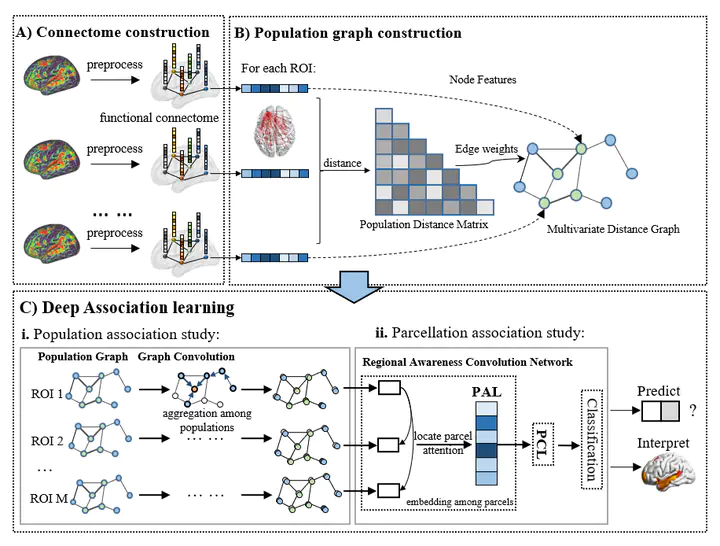A deep connectome learning network using graph convolution for connectome-disease association study

Abstract
Multivariate analysis approaches provide insights into the identification of phenotype associations in brain connectome data. In recent years, deep learning methods including convolutional neural network (CNN) and graph neural network (GNN), have shifted the development of connectome-wide association studies (CWAS) and made breakthroughs for connectome representation learning by leveraging deep embedded features. However, most existing studies remain limited by potentially ignoring the exploration of region-specific features, which play a key role in distinguishing brain disorders with high intra-class variations, such as autism spectrum disorder (ASD), and attention deficit hyperactivity disorder (ADHD). Here, we propose a multivariate distance-based connectome network (MDCN) that addresses the local specificity problem by efficient parcellation-wise learning, as well as associating population and parcellation dependencies to map individual differences. The approach incorporating an explainable method, parcellation-wise gradient and class activation map (p-GradCAM), is feasible for identifying individual patterns of interest and pinpointing connectome associations with diseases. We demonstrate the utility of our method on two largely aggregated multicenter public datasets by distinguishing ASD and ADHD from healthy controls and assessing their associations with underlying diseases. Extensive experiments have demonstrated the superiority of MDCN in classification and interpretation, where MDCN outperformed competitive state-of-the-art methods and achieved a high proportion of overlap with previous findings. As a CWAS-guided deep learning method, our proposed MDCN framework may narrow the bridge between deep learning and CWAS approaches, and provide new insights for connectome-wide association studies.